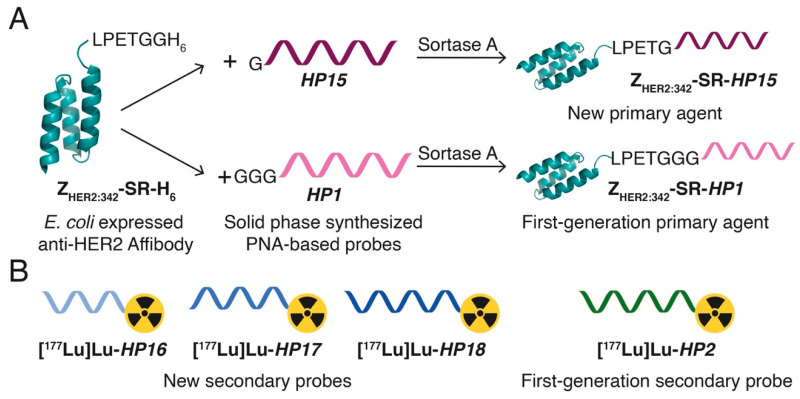Figure 1.
Schematic illustration of the (A) primary agents and (B) secondary probes used in this study (for PNA probe sequences, see Table 1). (A) The new primary agent, ZHER2:342-SR-HP15, was produced using sortase-catalyzed ligation of a solid phase-synthesized PNA-based probe, HP15, to an E. coli-expressed anti-HER2 affibody molecule, ZHER2:342-SR-H6. The resulting chimeric ZHER2:342-SR-HP15 was designed to have the ability to simultaneously bind to HER2-overexpressing tumor cells and to one of the new complementary secondary probes, HP16, HP17, or HP18, with high affinity. For comparative biodistribution studies, the first-generation primary agent ZHER2:342-SR-HP1 was produced using the same protocol for ZHER2:342-SR-HP15. ZHER2:342-SR-HP15 and ZHER2:342-SR-HP1 contain the same affibody molecule and differ only in the sequence of the attached PNA-based probe. (B) The three new secondary probes, HP16 (9-mer PNA), HP17 (12-mer PNA), and HP18 (15-mer PNA), were designed to bind to ZHER2:342-SR-HP15 (15-mer PNA) through sequence-specific PNA:PNA hybridization. The new secondary probes were synthesized using solid phase synthesis, and all carry a DOTA chelator for radiometal labeling with, in this study, 177Lu. For biodistribution studies in vivo, the first-generation secondary probe HP2 was produced and 177Lu-labeled using the same protocols for the new secondary probes.

